New York City-based photographer Matt Dutile recently returned from Morocco, where he spent several weeks traveling the country and taking photos of the people, places and food. In this photo essay he roams from markets to madrasas to metalsmiths in search of the heart and soul of the city of Meknes.
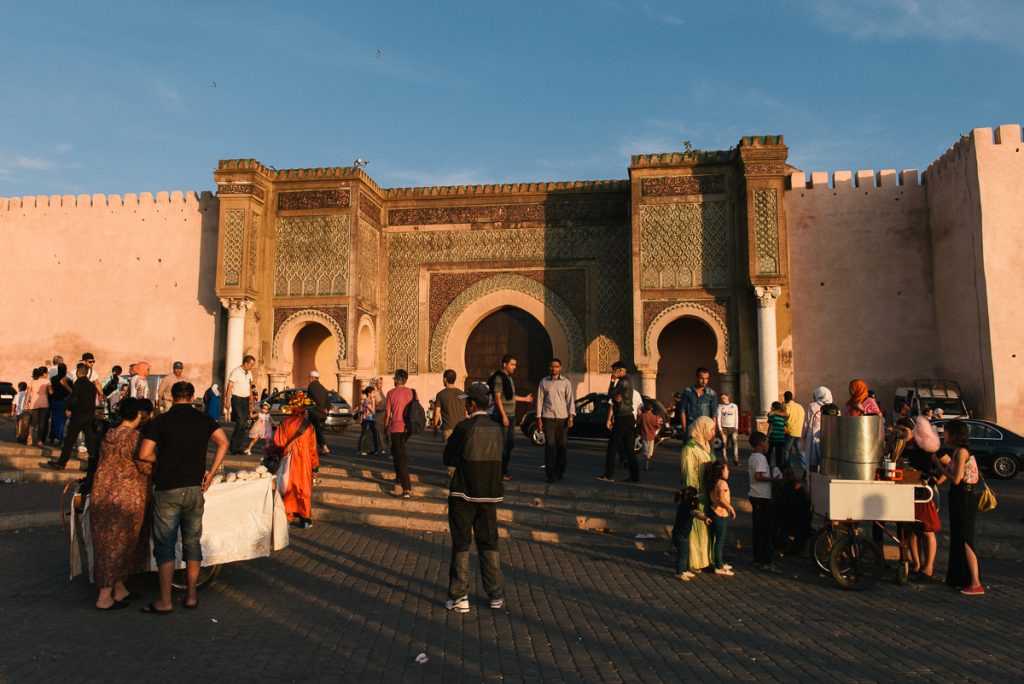
Copyright Matt Dutile
At the end of the day, locals and tourists alike flock to the Place El Hadhim in the historic center of Meknes to taste confectionary treats, browse street vendors hawking wares, and listen to story-tellers spinning lyrical tales in the towering shadow of Bab Mansour.

Copyright Matt Dutile
1447 – The gate of Bab Mansour is perhaps the most striking of the many babs (gates) around the historic center of Meknes. It was commissioned and completed in the early 1700s under the direction of Moulay Ismail, King of Morocco, when Meknes was the seat of power.

Copyright Matt Dutile
Found within the winding streets of Meknes old town, Medrasa Bou Inania once housed a select group of Quranic students from all over the region. Completed in the mid 1300s, the school showcases intricate, detailed displays of Islamic architecture and art.
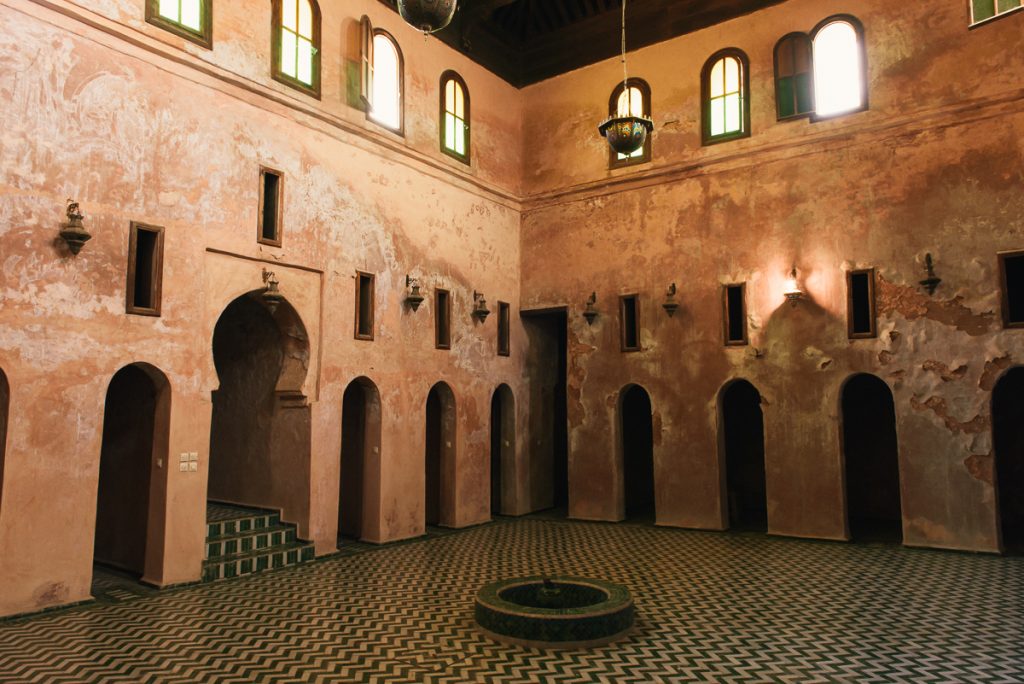
Copyright Matt Dutile
Following a side passage from the main hall of Medreasa Bou Inania will bring you to this less-frequented part of the school. The simple, austere designs stands in sharp contrast to the myriad of details in the main courtyard, and paints a picture of every day life for visitors here.
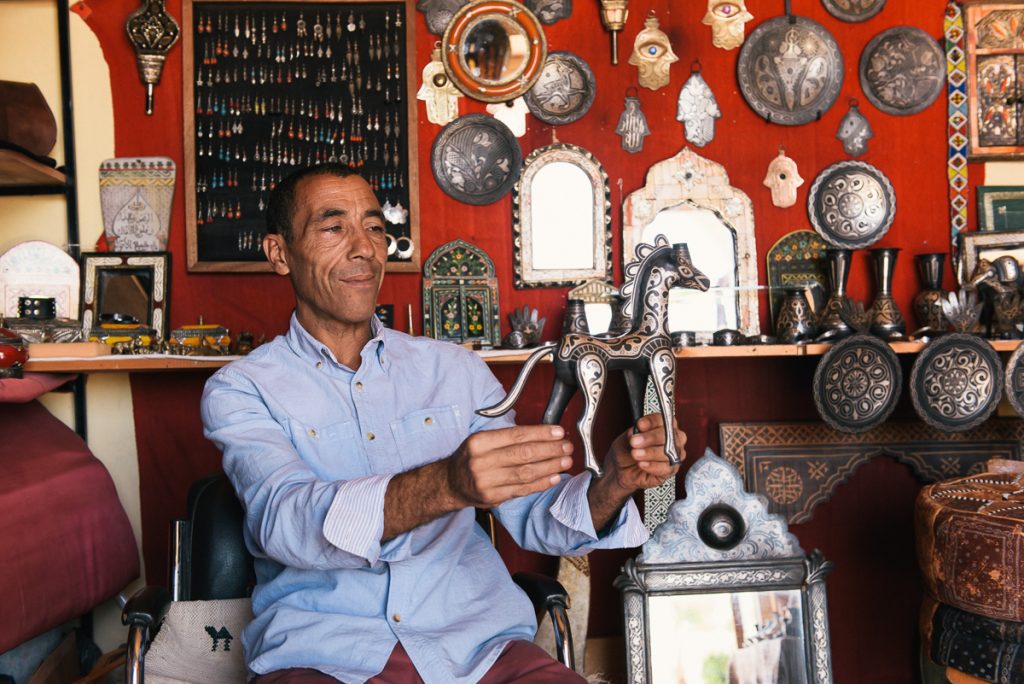
Copyright Matt Dutile
Across from the Prison de Kara, this artisan metalsmith takes a moment to inspect one of the intricate pieces he’s crafted. Various souvenir crafts can be found from artisans throughout the historic center ranging from jewelry to sculptures, plating and the Hand of Fatima.

Copyright Matt Dutile
Loubia, a traditional dish of white beans, is a must-eat on your trip to Meknes. Accompanied by a mint tea at the Riad D’Or in the historic center, this classic dish doesn’t have many frills, but packs lots of heartiness and homemade taste.
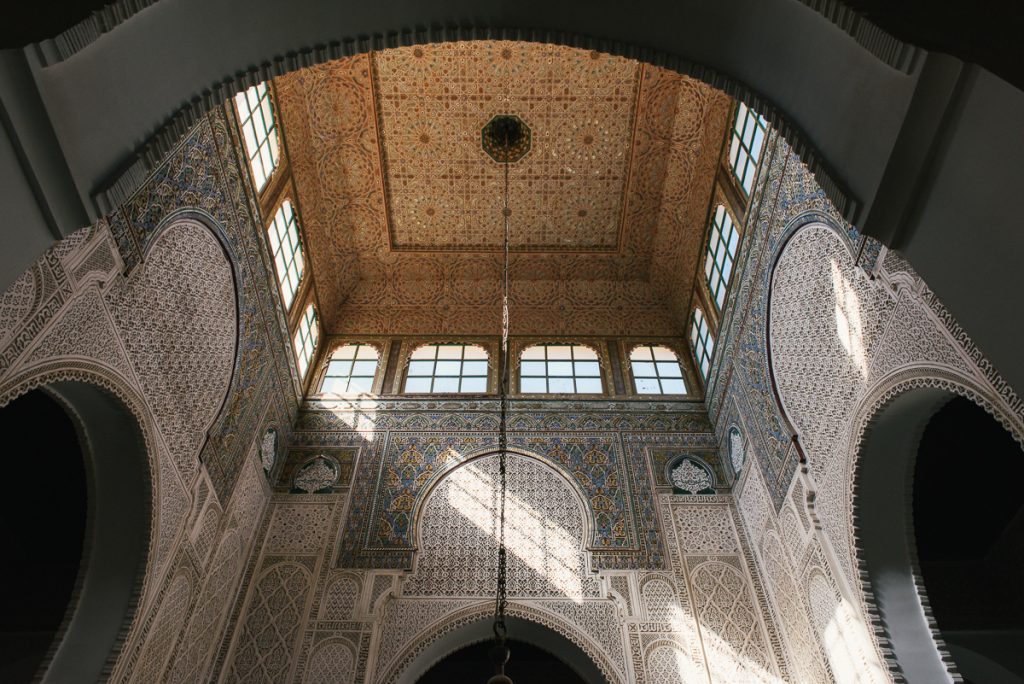
Copyright Matt Dutile
The Mausoleum of Moulay Ismail is the top attraction for tourists in Meknes, who often make it a day trip from Marrakech or a stopover to Fes. The intricate architecture and artwork is a testament to the late 17th and 18th century ruler. Note that admission is free despite “guides” near the entrance who might try to convince you otherwise.
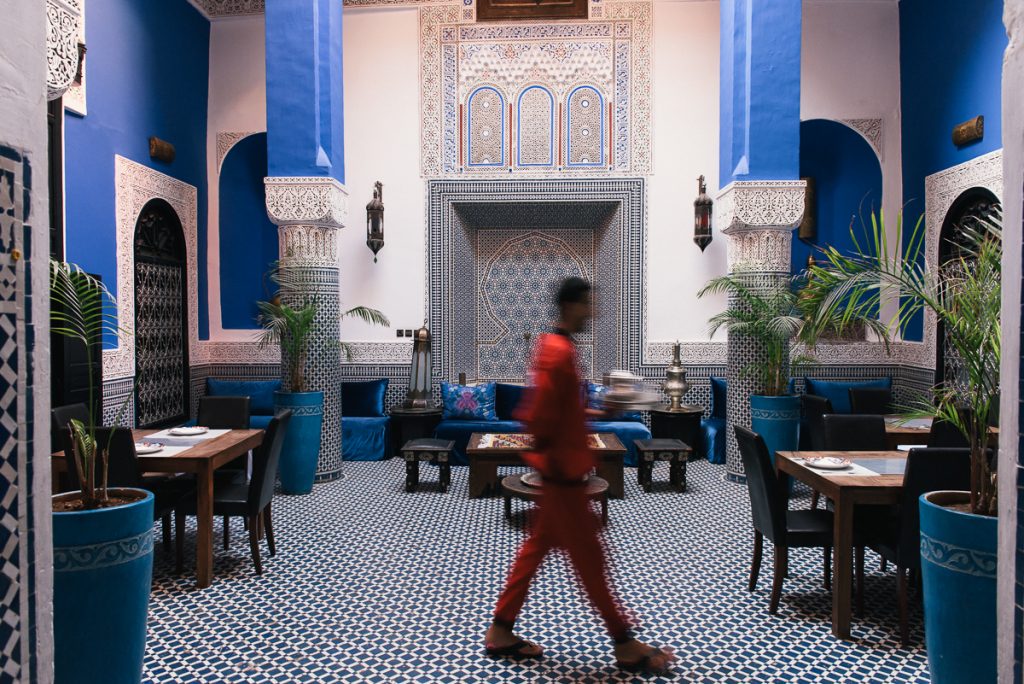
Copyright Matt Dutile
A staff member carries a tray of tea inside the wonderful dining space and courtyard of the Riad D’Or. A stay in the right riad in Morocco will truly make you feel like a guest instead of a fly-by tourist.
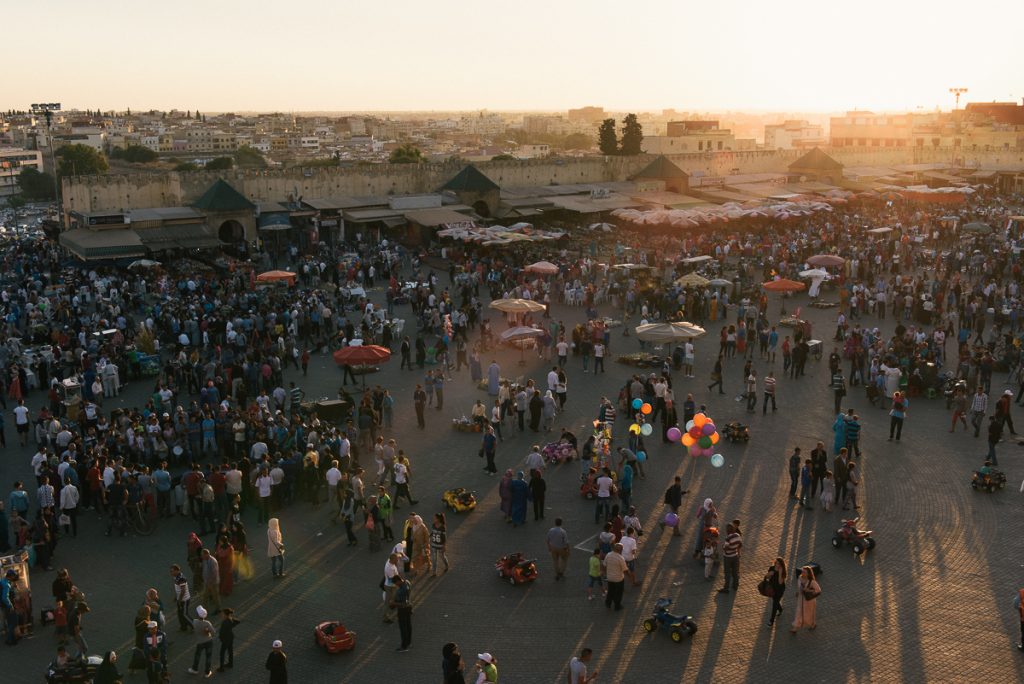
Copyright Matt Dutile
Grab a mint tea at the Pavillon des Idrissides on the corner of the Place El Hadhim for a spectacular end-of-day view as the square comes to life. The double-decker terrace also offers great views of Bab Mansour and some of the surrounding hills.

Copyright Matt Dutile
As night descends, the evening call to prayer can be heard echoing across the city from the myriad minarets that pop up from the Meknes skyline. Find a riad rooftop to take in the peaceful call and see the city laid out before you.
Want to discover the finer side of Africa? Sign up for our weekly newsletter.
